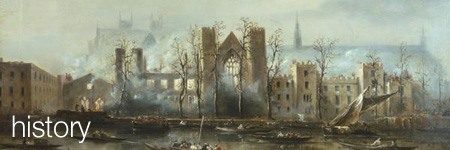
Charterhouse Square
Finsbury (EC1) The site of this square was in part a lonely field, bearing the name of" No Man's Land." Ralph Stratford bought it as a place of burial for the victims of the pestilence in 1349, "where was buried in one year no less than 60,000 of the better sort of people" (Camden) . (Reference: Timbs's Curiosities of London, p. 85) The London Charterhouse was the fourth house of the Carthusian order founded in England. "It had flourished for nearly three centuries in prosperity when the storm of the Dissolution broke upon them." Thomas Sutton, descended from one of the most ancient families of Lincolnshire, bought Charterhouse of Lord Howard, Earl of Suffolk, and second son of the Duke of Norfolk, for £13,000, and petitioned King James and the Parliament for leave and licence to endow the present hospital in 1609. Letters patent for the hospital were issued in .June 1611. Sutton's scheme was for a hospital for poor men (who had at one time been householders) and a free school for the teaching and maintenance of poor children and scholars. The original school was removed to Godalming in 1872. The Poor Brothers remain. They dine in the Great Hall, and attend prayers twice a day. They receive £36 a year, have comfortable rooms rent free, and are required to wear, when in bounds, a long black cloak. The works of Thackeray, who was educated here, abound in references to "Grey Friars," as he calls Charterhouse. The register contains the names of numerous pupils afterwards illustrious in various departments of public life. Among these may be noted Richard Lovelace, Joseph Addison, Richard Steele, John Wesley, Sir William Blackstone, Lord Ellenborough, General Havelock, Sir Henry Russell, William Makepeace Thackeray, John Leech, etc., etc. (Reference: Thornbury's Old and New London, vol. II, pp. 385-6, 398-402)